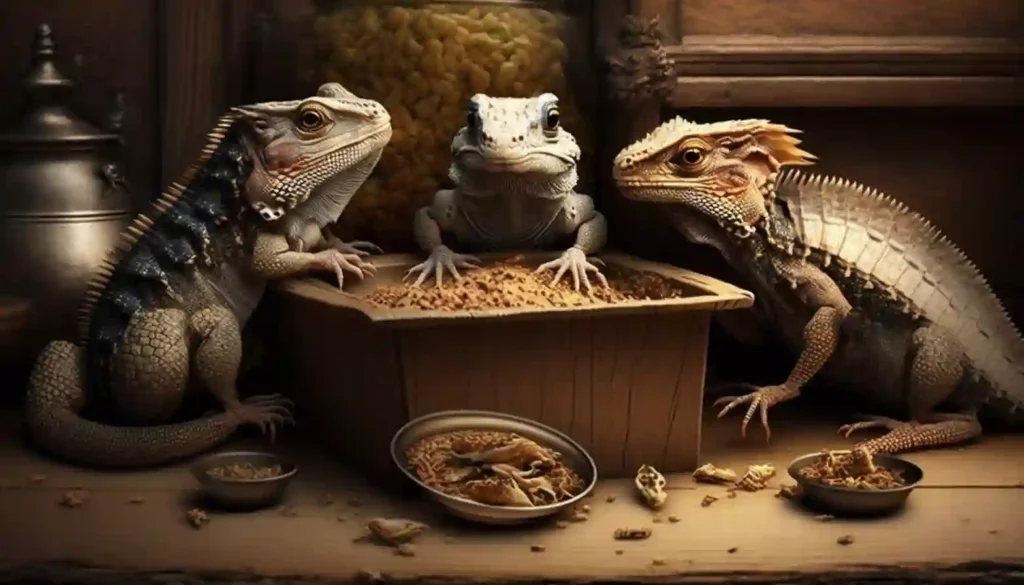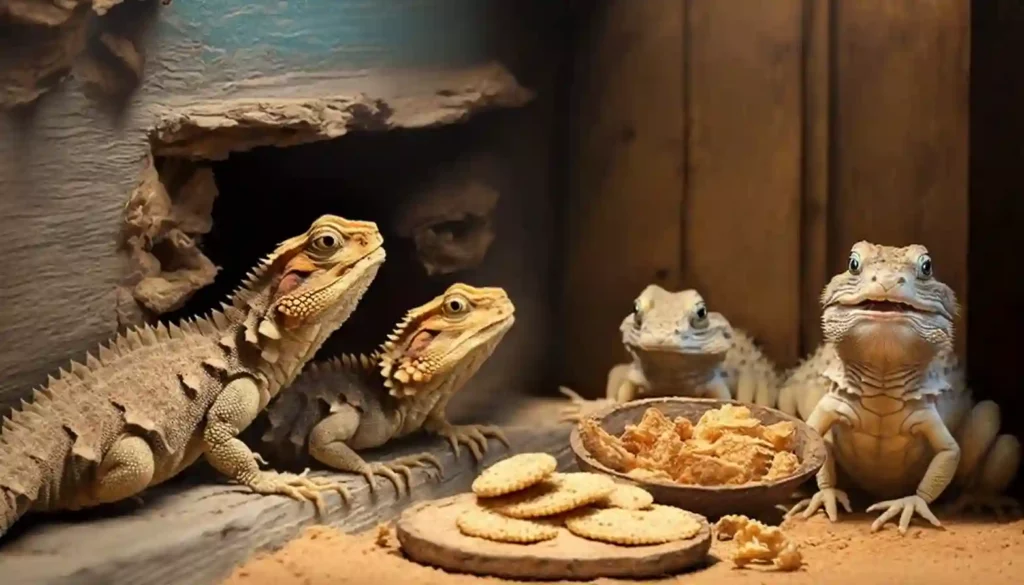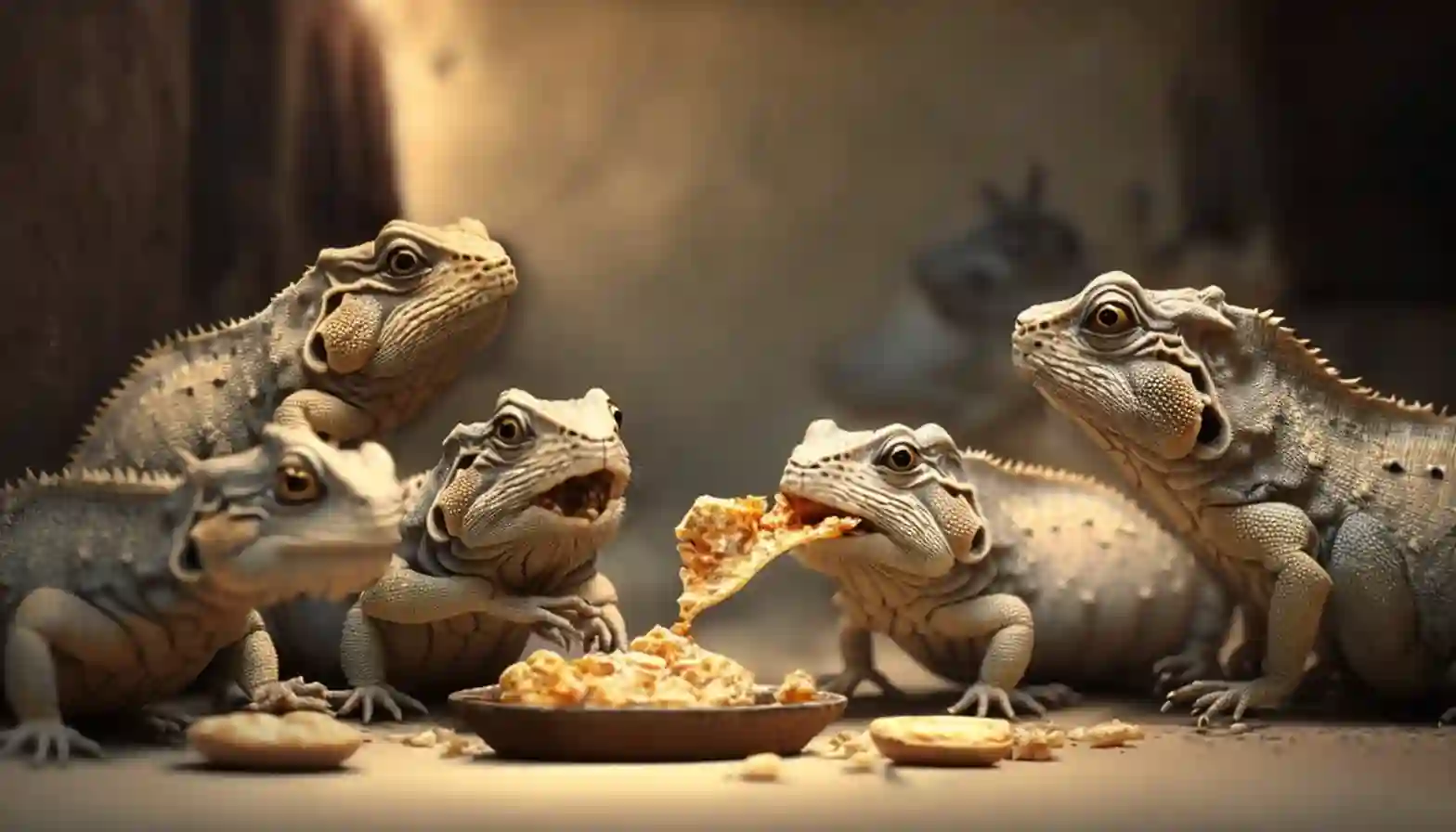Yes, Bearded dragons can eat roaches, but only certain types are recommended. Dubia roaches are the most commonly recommended type of roach to feed bearded dragons.
House roaches are not recommended as they may carry harmful bacteria or parasites.
Baby bearded dragons can eat Dubia roaches. But you cannot feed a whole Roach to a baby Beardie.
A baby bearded dragon can consume up to 1/4 inch of the size of a Dubia roach. It is the best recommendation for baby bearded Dragons.
As time passes by, and the age gets a little bit older and bigger, you can increase the size of the Dubia Roach for up to half an inch.
A full-grown bearded dragon can eat three to five Dubia roaches over the course of two to three feedings per day.
Are There Any Risks Associated With Feeding House Roaches To Bearded Dragons?

Yes, there are some risks associated with feeding house roaches to bearded dragons.
Feeding these insects could potentially be dangerous to the reptile’s well-being and health.
The idea of being fed house roaches may seem like a dream come true for a bearded dragon as they can feast on an abundance of food at once; however, this is not recommended due to the numerous potential threats it carries.
House roaches that have been caught in homes or buildings pose many problems when deciding whether or not it is safe to feed them to your pet.
These include pesticide residue and other toxins found in their environment which could become concentrated inside the insect itself.
If ingested by a bearded dragon, these chemicals could cause serious harm – even death – if consumed in large quantities.
Additionally, wild-caught roaches may carry parasites that can easily infect your beloved lizard upon ingestion.
Therefore, before considering feeding any sort of bug or insect to your pet, you should always make sure that it has been sourced from a reliable supplier who ensures its safety and quality beforehand.
How Often Should Bearded Dragons Eat Roaches?

Bearded dragons should be fed roaches no more than twice a week.
These reptiles need adequate nutrition, and their diet should consist of mostly vegetables, fruits and other insects such as grasshoppers or crickets.
Roaches are not necessary to complete the bearded dragon’s nutritional requirements; they simply provide additional protein.
When deciding how often to feed your pet roaches, it is important to take into account its size and activity level.
For larger adult dragons that lead an active lifestyle, up to 2-3 times per week may be appropriate.
However, smaller juveniles should have fewer servings due to their slower metabolism rate and lower energy needs.
When feeding your reptile roaches, always keep in mind that too much can cause obesity and health issues over time so it is best to stick with the recommended frequency for optimal health benefits.
Also, make sure you’re providing a balanced diet by including fresh veggies and occasional treats like waxworms or earthworms in addition to the occasional insect meal.
This will ensure your dragon gets all the essential nutrients needed for a healthy life.
What Other Insects Can Bearded Dragons Eat Besides Roaches?

Have you ever wondered what kinds of insects other than roaches a bearded dragon can eat?
There are several different types of bugs that make great meals for these lizards.
Mealworms, locusts, crickets, fruit flies and waxworms should all be included in their diet as they provide essential nutrition to help them grow strong and healthy.
Mealworms are the most common feeder insect available for bearded dragons and come in a variety of sizes depending on the size of your lizard.
They contain plenty of protein and fat which is important for keeping up energy levels throughout the day.
Locusts are also an excellent source of nutrients, with higher amounts of calcium than many other feeders making them ideal for growing dragons.
Crickets offer lots of vitamins and minerals as well as chitin to aid digestion – perfect for those who need more fiber in their diets!
Fruit flies are a good alternative if mealworms aren’t readily available or too expensive – just remember to remove any uneaten food after feeding time so it doesn’t spoil your reptile’s habitat.
Finally, waxworms have high levels of fatty acids but should only be used occasionally due to their sugar content.
Preparing And Presenting Roaches For Bearded Dragons
Providing house roaches to your bearded dragon can be a rewarding experience. To ensure the safety of both you and your pet, proper preparation must take place before the presentation. Here are some tips for making this process easier:
- Dusting Roaches: Before feeding, dusting roaches with calcium or other vitamins is recommended. This will provide extra nutrition that they may not get from their natural environment.
- Preparing Roaches: It’s important to make sure that any live roaches have been cleaned properly prior to feeding them to your bearded dragon. Cleaning should include removing dirt and debris as well as washing away any chemical residue.
- Presenting Roaches: Once cleaning is complete, presenting the roaches in an appropriate manner is essential. The best way to do this is by placing them on top of food such as vegetables or fruit so that your reptile has easy access to it.
- Feeding Roaches: When it comes time to feed the roaches, always make sure that your pet is within sight and reach at all times during the process. This ensures that he does not become stressed out or overwhelmed when trying to catch his meal.
By following these simple steps, preparing and presenting house roaches for your bearded dragon will be much easier and safer for everyone involved.
Alternatives To House Roaches
It is not recommended to feed house roaches to bearded dragons due to the risk of parasites and bacteria. Fortunately, there are many safe alternatives that can still provide a nutritious diet for your pet.
| Protein | Fat |
|---|---|
| Crickets | 10% |
| Mealworms | 11% |
| Waxworms | 24% |
| Superworms | 13% |
| Locusts 5-7% 12-14% 6-8 % 9-11 % 15-17 % |
Crickets, mealworms, waxworms, super worms, and locusts all make delicious treats for your dragon!
Not only are they safer than house roaches, but they also contain more nutritional value in terms of fat and protein content than house roaches.
For example, crickets contain 10 percent protein while locusts have 15-17 percent protein depending on the species.
In contrast, house roaches contain 7 percent protein which is much lower than these other options.
Additionally, insect larvae such as wax worms offer high levels of fat up to 24%.
This makes them an ideal snack between meals or during times when extra energy is needed by your dragon.
With so many nutrient-rich alternatives available it is easy to see why feeding house roaches should be avoided at all costs.
Common Behaviors When Eating Roaches
Bearded dragons are omnivorous, meaning they eat both plants and animals; however, roaches make up a large portion of their diet.
When it comes to eating habits, bearded dragons have certain natural behaviors that stand out.
As the dragon begins its mealtime, it will start by cleaning each piece of food thoroughly before consuming it.
Then, in an effort to maximize nutrition intake while following a consistent diet pattern, the bearded dragon will swallow the pieces whole.
It’s quite amazing how quickly these lizards can use their tongues to pick off bits of food from surfaces or other objects.
In addition to picking food from surfaces and objects, bearded dragons also enjoy using their claws for gathering meals – something not seen often but can be observed when presented with larger prey like house roaches.
The lizard will grab hold of the insect and shake it vigorously until all its body parts are separated then eaten one after another.
To finish this process without having to worry about being poisoned by any toxins found on the surface of the bug’s skin, most beardies rely on their powerful sense of smell followed by their instinctual tongue-flicking technique as a way to check if any potential danger lies ahead.
